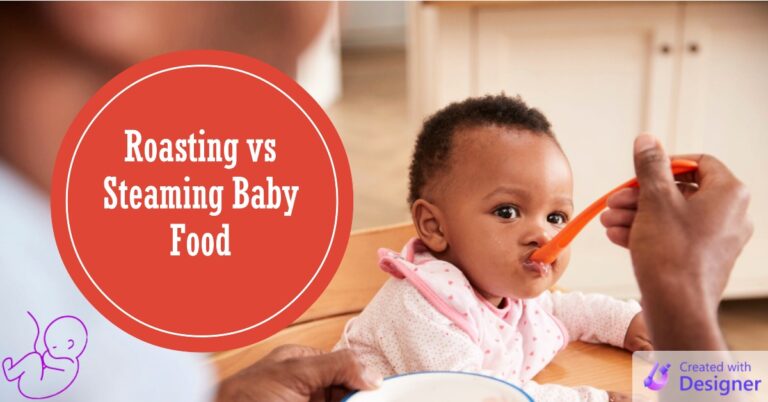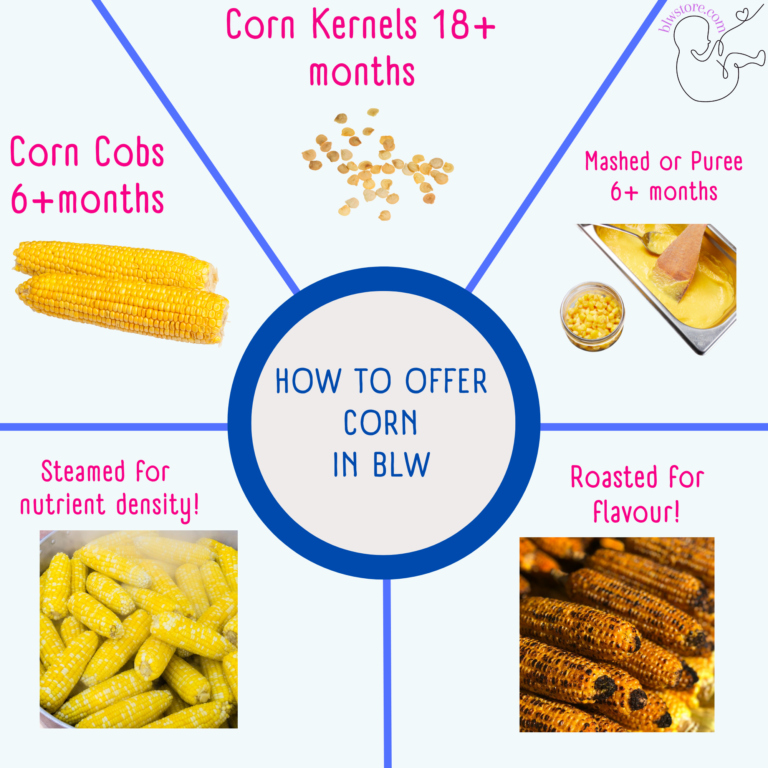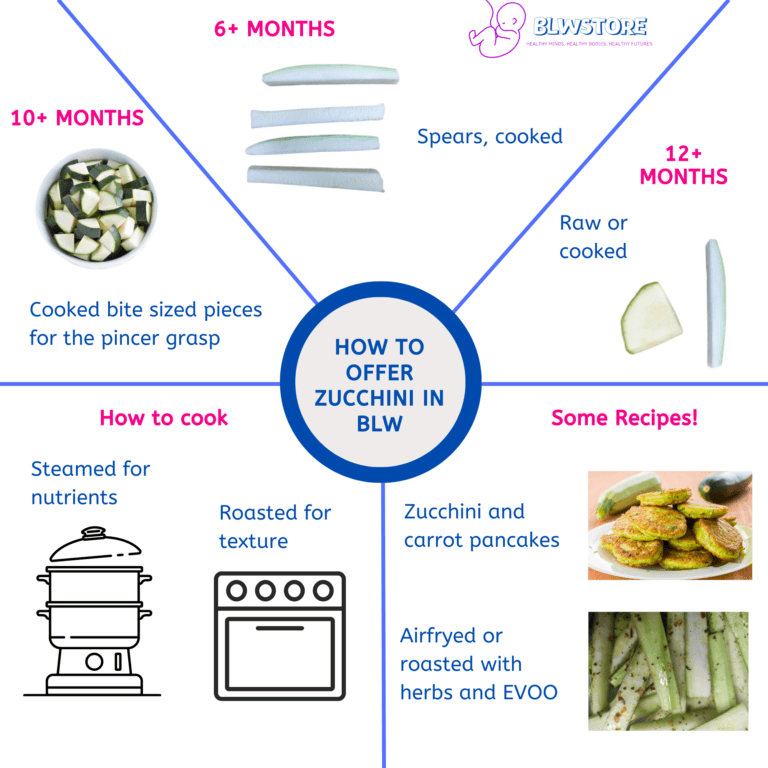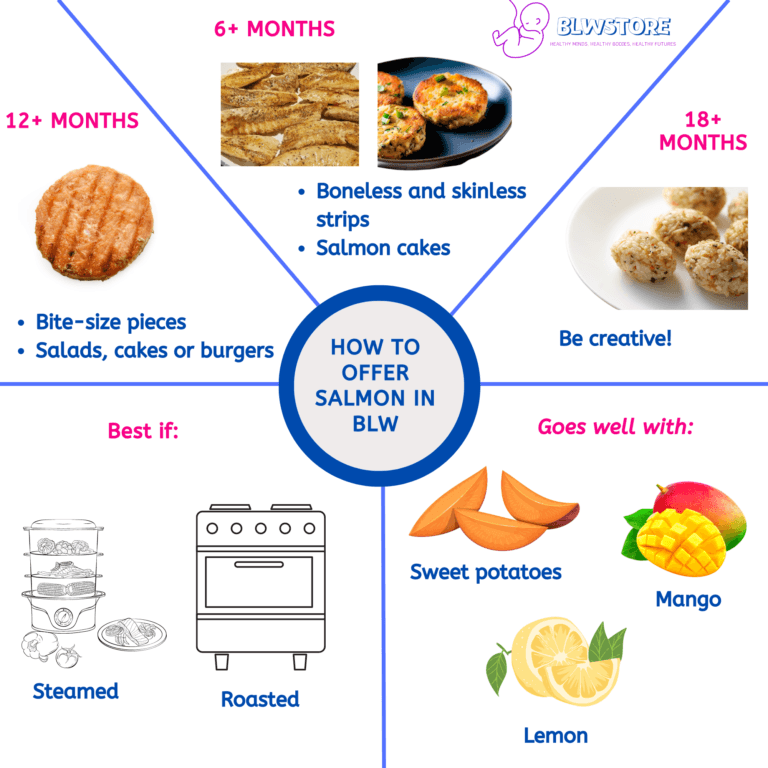
List of the Key Benefits of Baby-Led Weaning
Self-feeding and exploration of various colors, textures, and tastes.
Development of appetite regulation and self-awareness.
Exposure to a wide range of nutrients, flavors, and textures fosters healthy eating habits.
Time and money are saved as there’s no need for special purees or baby food, reducing waste.
Improved hand-eye coordination and fine motor skills.
Stimulation of oral motor development and speech skills.
Encouragement of self-regulation, independence, and good food choices.
Risk of picky eating habits and obesity is reduced.
Shared mealtime experiences improve relationships, bonding, and critical social skills development.
Healthy eating habits are encouraged among the whole family.
Blwstore is supported by its audience. When you buy through links on our site, we may earn an affiliate commission.
Are you tired of the traditional way of introducing your baby to solids?
Are you tired of spoon-feeding mushy purees that leave no room for independence and exploration? *Read: BLW vs Purees
If so, then baby-led weaning might be the answer to all your troubles.
Baby-led weaning, or BLW, is a growing method of introducing solid foods to babies.
In this method, babies are encouraged to feed themselves with finger foods instead of spoon-feeding purees from the beginning.
It allows infants to develop self-regulation skills while exploring new textures and flavors at their own pace.
This article will cover all the benefits of this feeding approach so you can decide whether it is worth applying in your home.
Let’s get after it!
Our Personal Experience With Baby-Led Weaning

Maria and I have a background in nutrition. It has always been a field in which we have been interested and closely followed scientific advances and studies.
When Maria became pregnant, we started doing a lot of research and reading about infant nutrition. We learned as much as we could about the Baby-Led Weaning method before implementing it.
We had our doubts, but we can assure you that it was one of the best decisions we have ever made.
After two and a half years, Pablo (our son) likes any food. It is a pleasure to have him at the table with us and the family; he has much healthier eating habits than ours (and we take care of ourselves as much as we can).
We don’t like to compare, but the truth is that looking at other boys and girls his age, his motor and eating skills far surpass those of his age, including many children older than him.
We were so convinced that we decided to share our knowledge and experience on the subject with other parents, creating this website.
What is Baby-Led Weaning?
Baby-led weaning is a baby-feeding approach that allows babies to self-feed from the start. Instead of being spoon-fed by an adult or caregiver, infants are given soft and easy-to-grasp finger foods that they can pick up on their own. They can explore different colors, textures, and tastes without any pressure.
The idea behind baby-led weaning is that it helps babies learn how to regulate their own appetites by choosing how much they want to eat. This approach also gives parents more freedom in terms of meal preparation because there’s no need for special purees or baby food.
A Brief Overview of the Benefits of BLW
Baby-led weaning offers developmental benefits such as self-awareness and appetite regulation, nutritional advantages through exposure to diverse nutrients, flavors, and textures, and financial benefits by saving baby food and equipment time and money.
It promotes bonding and exploration during meal times.
Baby-led weaning has several benefits that are worth discussing. These include developmental, nutritional, and financial advantages.
Developmentally, infants become more self-aware and learn how to regulate their appetites through self-feeding.
Nutritional benefits include the exposure to a wide variety of nutrients, flavors and textures, which can help instill healthy eating habits early on.
Parents also benefit from BLW because it is less time consuming compared to traditional puree feeding methods.
It can save money by eliminating the need for expensive baby foods or specialized equipment.
Baby-led weaning may not be for everyone, but it’s worth considering as a gentle and natural approach to introducing solid foods to your little one, allowing them freedom in exploration while helping you bond with them during meal times.
What Are The Benefits of Baby-Led Weaning for the Baby?
Baby-led weaning promotes improved hand-eye coordination, fine motor skills, oral motor development, and speech skills.
It also offers nutritional advantages, such as exposure to diverse textures, flavors, and nutrients, reducing the risk of picky eating habits and obesity and promoting healthy and independent eating habits.
Developmental Benefits
| Developmental Advantages of BLW |
|---|
| Improved hand-eye coordination and fine motor skills |
| Enhanced oral motor development and speech skills |
| Increased self-regulation and independence |
| Babies develop fine motor skills for life |
| Spoon-feeding lacks challenge for fine motor skills |
| Stimulates mouth for better tongue movement and jaw strength |
| Supports speech development |
| Promotes learning to control food choices and avoid overeating |
| Sets up babies for success in making good food choices |
One of the key advantages is improved hand-eye coordination and fine motor skills. When babies are encouraged to pick up and handle food on their own, they develop fine motor skills that will be helpful throughout their lives.
This contrasts to spoon-feeding babies with purees or mashed foods, which doesn’t challenge these skills as much.
Another benefit is enhanced oral motor development and speech skills.
When babies are allowed to explore a variety of textures and flavors on their own terms, it stimulates their mouths in ways that can improve tongue movement, jaw strength, and other abilities related to speech development. It may seem counterintuitive that letting a baby play with food could help them learn how to talk better, but evidence supports this idea.
Baby-led weaning can increase self-regulation and independence as babies learn how to control what they eat, how much they eat, and when they eat it. This can set them up for success later in life when it comes to making good food choices and avoiding overeating.
Nutritional Benefits
| Nutritional advantages of BLW |
|---|
| Exposure to a variety of textures, flavors, and nutrient |
| Reduced risk of picky eating habits and obesity |
| Varied diets as babies grow older |
| Promotes healthy and independent eating habits |
| Encourages exploration of new foods and textures |
| Long-term benefits for child’s health and happiness |
One of the biggest advantages is exposure to various textures, flavors, and nutrients. Babies exposed to a wide range of foods early on are more likely to have varied diets as they age.
This means they’re less likely to be picky eaters who refuse anything except chicken nuggets or macaroni and cheese.
Another nutritional benefit is that baby-led weaning may help reduce the risk of obesity and picky eating habits.
Studies have shown that babies who are allowed to self-regulate their food intake are less likely to overeat or develop unhealthy relationships with food later in life.
If you want your child to grow up healthy, happy, and independent, baby-led weaning might be the way to go.
Don’t be afraid to let your baby explore new foods and textures on their own terms – it could pay off big time in the long run.
What Are The Benefits of Baby-Led Weaning for the Parents?
Baby-led weaning benefits the whole family, including a shared mealtime experience that builds better relationships, opportunities to bond and connect, sharing values about healthy eating habits, teaching critical social skills, and enjoying each other’s company.
It also encourages bonding with family members, develops a positive relationship between parent and child, promotes healthy eating habits in children, models healthy behaviors, prevents childhood obesity, and promotes lifelong health.
Convenience Benefits: It Makes Mealtime Easier
| Convenient for parents |
|---|
| Convenience: Saves time on meal preparation |
| Eliminates the need for purees or special baby foods |
| Share your own food with your baby (know which ones to share) |
| Reduces meal prep time and saves money |
Let’s face it – parenting is no walk in the park. It’s a full-time job that requires constant attention and energy. With a new baby at home, mealtime can be particularly stressful.
That’s where Baby-Led Weaning (BLW) comes in to save the day. One of the biggest advantages of BLW for parents is convenience.
It saves time on meal preparation and eliminates the need for purees or special baby foods.
As a parent, you don’t have to spend hours in the kitchen preparing separate meals for your baby – you can share your own food with them! Just make sure it’s the right food!
Gone are the days of slaving over a hot stove to prepare homemade purees or spending a fortune on store-bought jars of baby food. With BLW, you can reduce meal prep time and save money.
Eliminates Need for Special Baby Foods: Reducing Waste and Saving Money
| Save money and reduce waste |
|---|
| Eliminates the need for purees or special baby foods |
| Reduces waste and saves money |
| Less waste with self-feeding from the family table |
| No need to buy a lot of specific products for your child |
| No need to purchase expensive organic baby food |
Not only does BLW eliminate the need for purees or special baby foods, but it also reduces waste and saves money.
Most parents who use traditional feeding methods end up throwing away jars upon jars of unused purees or baby foods that their little ones refuse to eat.
With Baby-Led Weaning, there’s less waste because babies are encouraged to self-feed from the family table using appropriate utensils and dishes.
You don’t have to worry about buying specific products for your child when you already have everything they need at home. Plus, since babies are eating what you’re eating, there’s no need to purchase expensive organic baby foods with a hefty price tag.
What Are The Benefits for the Family?
Baby-led weaning benefits the whole family, including a shared mealtime experience that builds better relationships, opportunities to bond and connect, sharing values about healthy eating habits, teaching critical social skills, and enjoying each other’s company.
It also encourages bonding with family members, develops a positive relationship between parent and child, promotes healthy eating habits in children, models healthy behaviors, prevents childhood obesity, and promotes lifelong health.
Shared Mealtime Experience Benefit
| Builds better relationships |
|---|
| Shared mealtime experience for families |
| Opportunity to bond and connect with each other |
| Sharing values about healthy eating habits |
| Enjoying each other’s company while sharing a meal |
| Teaching critical social skills through family meals |
| Better relationships with parents, siblings, and peers |
One of the most underrated benefits of baby-led weaning is its shared mealtime experience for families.
Mealtime is an excellent opportunity for parents and children to bond and connect with each other.
Parents can share their values about healthy eating habits, talk about their day, or enjoy each other’s company while sharing a delicious meal.
In addition, family meals are an excellent way to teach children important social skills such as table manners, conversation skills, and how to communicate effectively with others.
Children who grow up eating meals with their families are more likely to have better relationships with their parents, siblings, and peers.
Opportunity to bond with family members during mealtimes.
| Bonding with the family |
|---|
| Opportunity for parents to connect with their children |
| Offering healthy foods and involvement in mealtimes |
| Positive relationship between parent and child |
| Development of healthy eating habits in children |
| Modeling healthy behaviors and trying new foods |
| Prevention of childhood obesity and promotion of lifelong health |
Baby-led weaning provides an excellent opportunity for parents to connect with their children during mealtimes.
Parents can be involved by offering healthy foods appropriate for their child’s age and developmental stage.
This involvement encourages a positive relationship between parent and child that can be extended beyond mealtime.
Children who feel supported by their parents during mealtimes are more likely to develop healthy eating habits later in life.
Parents can model healthy behaviors such as trying new foods or enjoying various fruits and vegetables. (This is particularly important)
These positive habits can help prevent childhood obesity and promote lifelong health.
Encourages healthy eating habits among family members.
Baby-led weaning not only encourages healthy eating habits among babies but also among the entire family.
When parents offer a variety of nutritious foods during mealtimes, they set a good example for the rest of the family to follow.
This creates an environment where everyone is encouraged to eat well and make healthier choices.
Maria and I eat better now, and we feel better than ever.
Myths about BLW Debunked
Baby-led weaning is not dangerous as long as safety guidelines are followed.
Risks can be minimized by ensuring the baby is developmentally ready, supervising meals, using appropriate seating, avoiding choking hazards, and offering soft, easy-to-chew foods.
Proper precautions minimize the risk of choking, such as cutting food into appropriate-sized pieces, cooking vegetables until soft, encouraging slow eating, and respecting the baby’s appetite.
BLW is not dangerous as long as safety guidelines are followed
| Myth: Baby-Led Weaning (BLW) is dangerous |
|---|
| This is simply not true. |
| Risks associated with BLW if not done properly. |
| ✅ Follow recommended safety guidelines for BLW. |
| Baby should be developmentally ready for solid food. |
| Ensure baby sits up unassisted with good head control. |
| Always supervise baby during meals. |
| Use appropriate high chair or booster seat. |
| ⚠️ Avoid choking hazards like whole nuts or hard candy. |
| Offer soft, easy-to-chew and swallow foods. |
| Examples: cooked vegetables or ripe fruits. |
One of the biggest myths surrounding baby-led weaning is that it’s dangerous. This is simply not true.
Like anything else, there are risks associated with BLW if it’s not done properly.
However, if you follow the recommended safety guidelines that we teach you in our website, BLW is a safe and effective method of introducing your baby to solid foods.
For starters, it’s important to ensure your baby is developmentally ready for solid foods before starting BLW.
This means your baby should be able to sit up unassisted and have good head control.
Additionally, you should always supervise your baby during mealtimes and ensure they’re seated in an appropriate high chair or booster seat.
Another important safety consideration when practicing BLW is to avoid certain foods that pose choking hazards, such as whole nuts or hard candy.
Instead, offer soft foods easy for your baby to chew and swallow, such as cooked vegetables or ripe fruits.
BLW does not lead to choking if proper precautions are taken
| Myth: BLW leads to choking in babies |
|---|
| Choking risk exists (same as purees) but can be minimized. |
| Cut food into appropriate-sized pieces. |
| Cook vegetables until soft for easy mashing. |
| Avoid giving large food chunks. |
| Encourage baby to eat slowly. |
| Never force baby to eat more than they want. |
Another common myth about BLW is that it leads to choking in babies.
While it’s true that there’s always a risk of choking when introducing solid foods to babies (whether through traditional spoon-feeding or BLW), this risk can be minimized by taking proper precautions.
For example, make sure you cut food into appropriate-sized pieces and avoid giving your baby large chunks.
You can also cook vegetables until they’re soft enough for your baby to mash with their gums instead of having to chew them.
Furthermore, it’s important to encourage your baby to eat slowly and never force them to eat more than they want.
Conclusion
After exploring the numerous benefits of Baby-Led Weaning, it is clear that this method is the way to go for parents who want to raise healthy, independent, and adventurous eaters.
As we said before and if you have read until the end, we fully recommend this feeding approach for your baby. Do not be scared and start doing it!
If you have doubts or want guidance, do not hesitate in commenting or sending us an email.
Happy feeding!
We’re Maria and Alberto, a married couple and educators who are nutrition enthusiasts. Even before we had kids, we were already crazy about nutrition.
We’d read scientific articles, watch videos from nutritionists, and spend hours listening to nutrition podcasts.
Today, we continue doing this, but in a different way, as we’ve learned to sift through the noise and trends. Nutrition, like any other field of knowledge, the more you read and learn, the more you develop a comprehensive understanding of reality, and that’s what has happened to us.
Before having our first child, we focused on learning everything we could about child nutrition, using the same techniques we had already employed, backed by our extensive knowledge in nutrition.
Our mission is to help other parents with their children’s nutrition, to help them become the best versions of themselves.
If we are what we eat and drink, which is absolutely true, let’s do it right!







